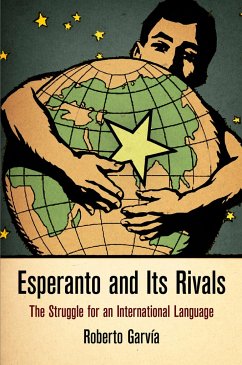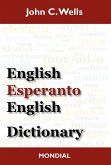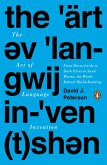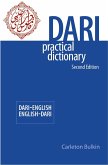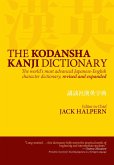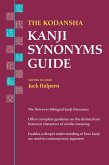- Gebundenes Buch
- Merkliste
- Auf die Merkliste
- Bewerten Bewerten
- Teilen
- Produkt teilen
- Produkterinnerung
- Produkterinnerung
Roberto Garvia is Associate Professor of Sociology at Universidad Carlos III de Madrid.
Andere Kunden interessierten sich auch für
![English-Esperanto-English Dictionary (2010 Edition) English-Esperanto-English Dictionary (2010 Edition)]() John Christopher WellsEnglish-Esperanto-English Dictionary (2010 Edition)40,99 €
John Christopher WellsEnglish-Esperanto-English Dictionary (2010 Edition)40,99 €![The Art of Language Invention The Art of Language Invention]() David J. PetersonThe Art of Language Invention25,99 €
David J. PetersonThe Art of Language Invention25,99 €![Dari-English/English-Dari Practical Dictionary, Second Edition Dari-English/English-Dari Practical Dictionary, Second Edition]() Carleton BulkinDari-English/English-Dari Practical Dictionary, Second Edition31,99 €
Carleton BulkinDari-English/English-Dari Practical Dictionary, Second Edition31,99 €![The Kodansha Kanji Dictionary The Kodansha Kanji Dictionary]() Jack HalpernThe Kodansha Kanji Dictionary88,99 €
Jack HalpernThe Kodansha Kanji Dictionary88,99 €![Making Sense of Japanese Making Sense of Japanese]() Jay RubinMaking Sense of Japanese13,99 €
Jay RubinMaking Sense of Japanese13,99 €![Dari-English/English-Dari Dictionary & Phrasebook Dari-English/English-Dari Dictionary & Phrasebook]() Nicholas AwdeDari-English/English-Dari Dictionary & Phrasebook12,99 €
Nicholas AwdeDari-English/English-Dari Dictionary & Phrasebook12,99 €![The Kodansha Kanji Synonyms Guide The Kodansha Kanji Synonyms Guide]() Jack HalpernThe Kodansha Kanji Synonyms Guide26,99 €
Jack HalpernThe Kodansha Kanji Synonyms Guide26,99 €-
-
-
Roberto Garvia is Associate Professor of Sociology at Universidad Carlos III de Madrid.
Produktdetails
- Produktdetails
- Haney Foundation Series
- Verlag: University of Pennsylvania Press
- Seitenzahl: 240
- Erscheinungstermin: 4. Juni 2015
- Englisch
- Abmessung: 236mm x 156mm x 30mm
- Gewicht: 516g
- ISBN-13: 9780812247107
- ISBN-10: 0812247108
- Artikelnr.: 42201468
- Herstellerkennzeichnung
- Libri GmbH
- Europaallee 1
- 36244 Bad Hersfeld
- gpsr@libri.de
- Haney Foundation Series
- Verlag: University of Pennsylvania Press
- Seitenzahl: 240
- Erscheinungstermin: 4. Juni 2015
- Englisch
- Abmessung: 236mm x 156mm x 30mm
- Gewicht: 516g
- ISBN-13: 9780812247107
- ISBN-10: 0812247108
- Artikelnr.: 42201468
- Herstellerkennzeichnung
- Libri GmbH
- Europaallee 1
- 36244 Bad Hersfeld
- gpsr@libri.de
Roberto Garvia is Associate Professor of Sociology at Universidad Carlos III de Madrid.
Introduction
Chapter 1. The Emergence of Linguistic Conscience
PART I. VOLAPUKÜK
Chapter 2. A Language in Search of a Problem
Chapter 3. Who Were the Volapükists?
Chapter 4. "Pandemonium in the Tower of Babel": The Language Critics
Chapter 5. "Strangled in the House of Its Friends": Volapük's Demise
Chapter 6. "My Troubled Child": The Artist and the Kulturkampf
PART II. ESPERANTO
Chapter 7. "The Purpose of My Whole Life": Zamenhof and Esperanto
Chapter 8. "Let Us Work and Have Hope!": Language and Democracy
Chapter 9. "The Menacing Thunderstorm of Reforms": First Esperantists and
First Crises
Chapter 10. The French Resurgence
Chapter 11. "Bringing Together the Whole Human Race": Esperanto's Inner
Idea
PART III. THE ESPERANTO CLUSTER: SAME LANGUGE, DIFFERENT COMMUNITIES
Chapter 12. The Demographics of Esperantujo
Chapter 13. Pacifists, Taylorists, and Feminists
Chapter 14. "Hidden-World Seekers": Esperanto in New Wave and Old Religions
Chapter 15. Freethinkers, Socialists, and Herderians
PART IV. IDO AND ITS SATELLITES
Chapter 16. "One Ideal International Language": Ido
Chapter 17. "Linguistic Cannibalism"
Conclusion
Notes
Bibliography
Index
Acknowledgments
Chapter 1. The Emergence of Linguistic Conscience
PART I. VOLAPUKÜK
Chapter 2. A Language in Search of a Problem
Chapter 3. Who Were the Volapükists?
Chapter 4. "Pandemonium in the Tower of Babel": The Language Critics
Chapter 5. "Strangled in the House of Its Friends": Volapük's Demise
Chapter 6. "My Troubled Child": The Artist and the Kulturkampf
PART II. ESPERANTO
Chapter 7. "The Purpose of My Whole Life": Zamenhof and Esperanto
Chapter 8. "Let Us Work and Have Hope!": Language and Democracy
Chapter 9. "The Menacing Thunderstorm of Reforms": First Esperantists and
First Crises
Chapter 10. The French Resurgence
Chapter 11. "Bringing Together the Whole Human Race": Esperanto's Inner
Idea
PART III. THE ESPERANTO CLUSTER: SAME LANGUGE, DIFFERENT COMMUNITIES
Chapter 12. The Demographics of Esperantujo
Chapter 13. Pacifists, Taylorists, and Feminists
Chapter 14. "Hidden-World Seekers": Esperanto in New Wave and Old Religions
Chapter 15. Freethinkers, Socialists, and Herderians
PART IV. IDO AND ITS SATELLITES
Chapter 16. "One Ideal International Language": Ido
Chapter 17. "Linguistic Cannibalism"
Conclusion
Notes
Bibliography
Index
Acknowledgments
Introduction
Chapter 1. The Emergence of Linguistic Conscience
PART I. VOLAPUKÜK
Chapter 2. A Language in Search of a Problem
Chapter 3. Who Were the Volapükists?
Chapter 4. "Pandemonium in the Tower of Babel": The Language Critics
Chapter 5. "Strangled in the House of Its Friends": Volapük's Demise
Chapter 6. "My Troubled Child": The Artist and the Kulturkampf
PART II. ESPERANTO
Chapter 7. "The Purpose of My Whole Life": Zamenhof and Esperanto
Chapter 8. "Let Us Work and Have Hope!": Language and Democracy
Chapter 9. "The Menacing Thunderstorm of Reforms": First Esperantists and
First Crises
Chapter 10. The French Resurgence
Chapter 11. "Bringing Together the Whole Human Race": Esperanto's Inner
Idea
PART III. THE ESPERANTO CLUSTER: SAME LANGUGE, DIFFERENT COMMUNITIES
Chapter 12. The Demographics of Esperantujo
Chapter 13. Pacifists, Taylorists, and Feminists
Chapter 14. "Hidden-World Seekers": Esperanto in New Wave and Old Religions
Chapter 15. Freethinkers, Socialists, and Herderians
PART IV. IDO AND ITS SATELLITES
Chapter 16. "One Ideal International Language": Ido
Chapter 17. "Linguistic Cannibalism"
Conclusion
Notes
Bibliography
Index
Acknowledgments
Chapter 1. The Emergence of Linguistic Conscience
PART I. VOLAPUKÜK
Chapter 2. A Language in Search of a Problem
Chapter 3. Who Were the Volapükists?
Chapter 4. "Pandemonium in the Tower of Babel": The Language Critics
Chapter 5. "Strangled in the House of Its Friends": Volapük's Demise
Chapter 6. "My Troubled Child": The Artist and the Kulturkampf
PART II. ESPERANTO
Chapter 7. "The Purpose of My Whole Life": Zamenhof and Esperanto
Chapter 8. "Let Us Work and Have Hope!": Language and Democracy
Chapter 9. "The Menacing Thunderstorm of Reforms": First Esperantists and
First Crises
Chapter 10. The French Resurgence
Chapter 11. "Bringing Together the Whole Human Race": Esperanto's Inner
Idea
PART III. THE ESPERANTO CLUSTER: SAME LANGUGE, DIFFERENT COMMUNITIES
Chapter 12. The Demographics of Esperantujo
Chapter 13. Pacifists, Taylorists, and Feminists
Chapter 14. "Hidden-World Seekers": Esperanto in New Wave and Old Religions
Chapter 15. Freethinkers, Socialists, and Herderians
PART IV. IDO AND ITS SATELLITES
Chapter 16. "One Ideal International Language": Ido
Chapter 17. "Linguistic Cannibalism"
Conclusion
Notes
Bibliography
Index
Acknowledgments

